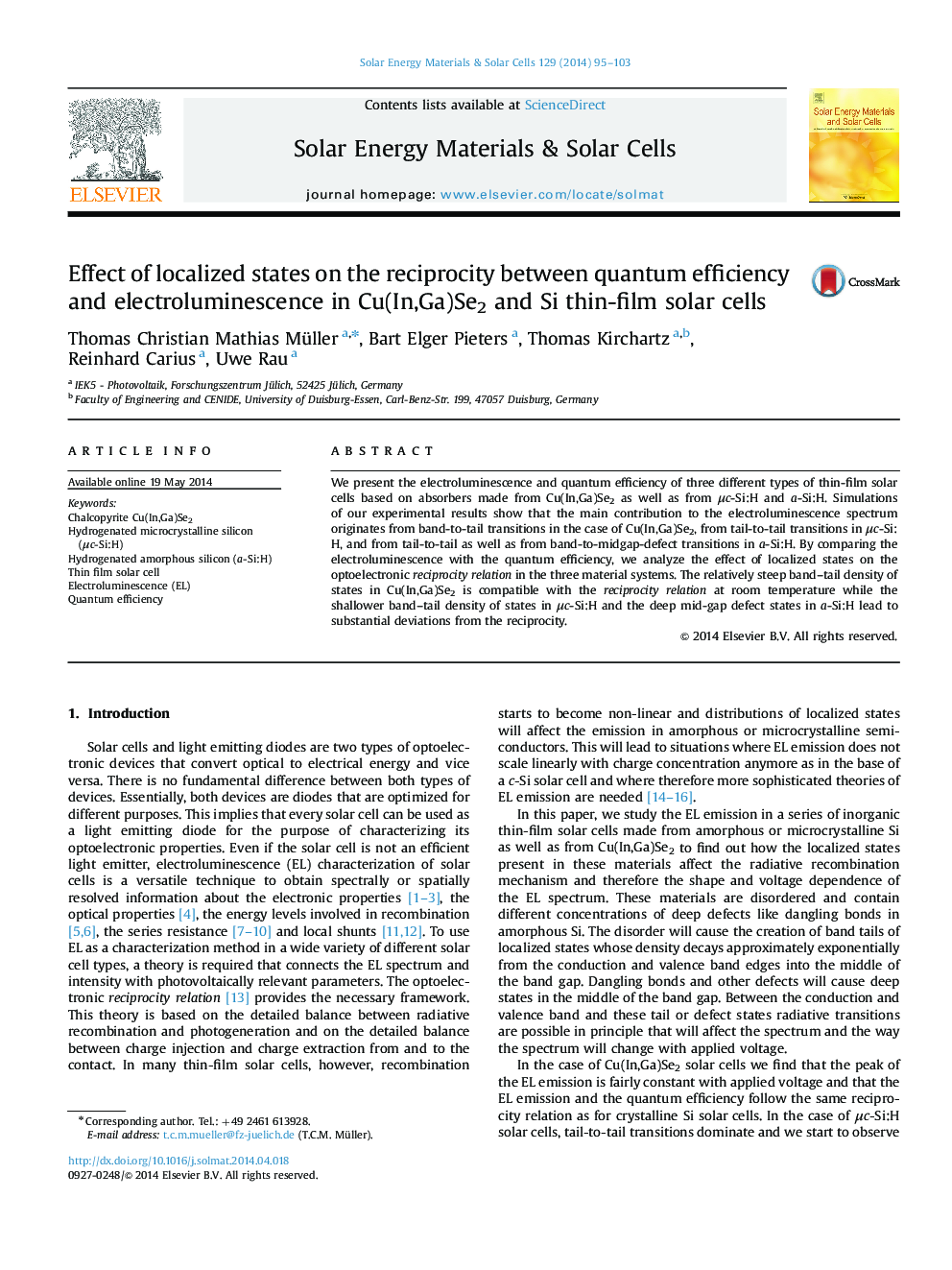| Article ID | Journal | Published Year | Pages | File Type |
|---|---|---|---|---|
| 78035 | Solar Energy Materials and Solar Cells | 2014 | 9 Pages |
•Reciprocity between electroluminescence and quantum efficiency valid in Cu(In,Ga)Se2.•Shallow band–tail density of states in μc-Si:H and a-Si:H violate reciprocity.•Stokes-shifted electroluminescence of a-Si:H violates reciprocity.•Mid-gap defect states in a-Si:H violate reciprocity.•Characterization of characteristic energy of band–tail density of states via EL.
We present the electroluminescence and quantum efficiency of three different types of thin-film solar cells based on absorbers made from Cu(In,Ga)Se2 as well as from μc-Si:H and a-Si:H. Simulations of our experimental results show that the main contribution to the electroluminescence spectrum originates from band-to-tail transitions in the case of Cu(In,Ga)Se2, from tail-to-tail transitions in μc-Si:H, and from tail-to-tail as well as from band-to-midgap-defect transitions in a-Si:H. By comparing the electroluminescence with the quantum efficiency, we analyze the effect of localized states on the optoelectronic reciprocity relation in the three material systems. The relatively steep band–tail density of states in Cu(In,Ga)Se2 is compatible with the reciprocity relation at room temperature while the shallower band–tail density of states in μc-Si:H and the deep mid-gap defect states in a-Si:H lead to substantial deviations from the reciprocity.
